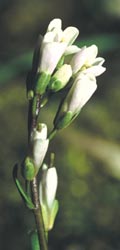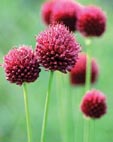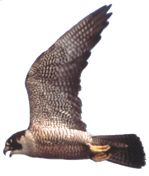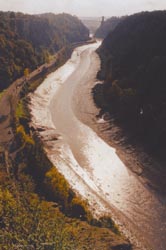|
|
 The Avon Gorge Wildlife The Avon Gorge has a micro-climate that is a degree or so warmer than the surrounding landscape. The steep rocky slopes of the Gorge have preserved this unique wilderness at the edge of a busy city. Species of plants have survived in the wooded and grassy areas of the Gorge that have either disappeared or are rare this far north. Others have evolved in the isolation of the Gorge, so that they are now unique versions of their species. The Bristol onion (left) and Bristol rock-cress (right) are such species. The Avon Gorge has a micro-climate that is a degree or so warmer than the surrounding landscape. The steep rocky slopes of the Gorge have preserved this unique wilderness at the edge of a busy city. Species of plants have survived in the wooded and grassy areas of the Gorge that have either disappeared or are rare this far north. Others have evolved in the isolation of the Gorge, so that they are now unique versions of their species. The Bristol onion (left) and Bristol rock-cress (right) are such species.
 Peregrine falcons have returned to hunt and breed in the Gorge. They venture further into the docks at Hotwells to swoop on smaller gulls. Peregrine falcons have returned to hunt and breed in the Gorge. They venture further into the docks at Hotwells to swoop on smaller gulls.
Geology
In the Avon Gorge there are plenty of exposures of the hard limestone which forms the ridge running from Clifton to Clevedon. It was quarried for lime and building stone, and mostly transported by boat up to Bristol. The rock contains many fossil shells and corals, which show that the area was under a shallow tropical sea about 350 million years ago (Carboniferous age).
 The origin of the Avon Gorge has puzzled visitors for many years: why does the river cut through Clifton Down rather than taking the easy way down the valley towards Weston-super-Mare? The legend of the giants Vincent and Goram digging out the Gorge provided one explanation, but nowadays it is usually thought that the river was blocked from following its original course by a mass of ice during the Ice Ages. The origin of the Avon Gorge has puzzled visitors for many years: why does the river cut through Clifton Down rather than taking the easy way down the valley towards Weston-super-Mare? The legend of the giants Vincent and Goram digging out the Gorge provided one explanation, but nowadays it is usually thought that the river was blocked from following its original course by a mass of ice during the Ice Ages.
The old Hotwell at the south end of the Gorge was based on a warm water spring which emerges just above the low tide mark near the old paddle steamer jetties. The water has a similar chemistry to the hot springs in Bath and hot waters found near Southampton, so it is thought that all three are fed by rain water which sank down through a line of fractured rocks where it was heated deep underground and forced back to the surface.
Today the Gorge is managed by the Avon Gorge & Downs Project on the east side and the National Trust and Forestry Commission on the west. Download the Forestry Commission's Leigh Woods leaflet here.
|
|


